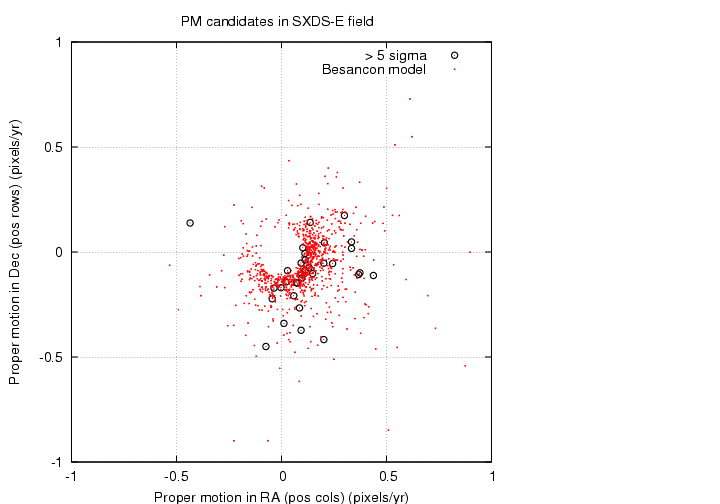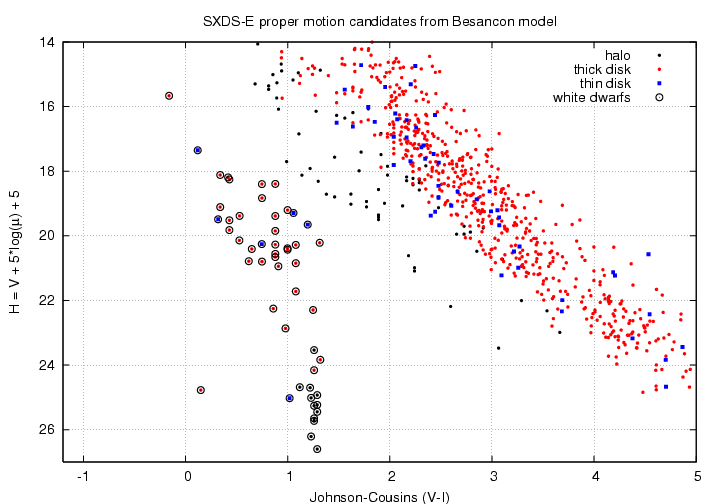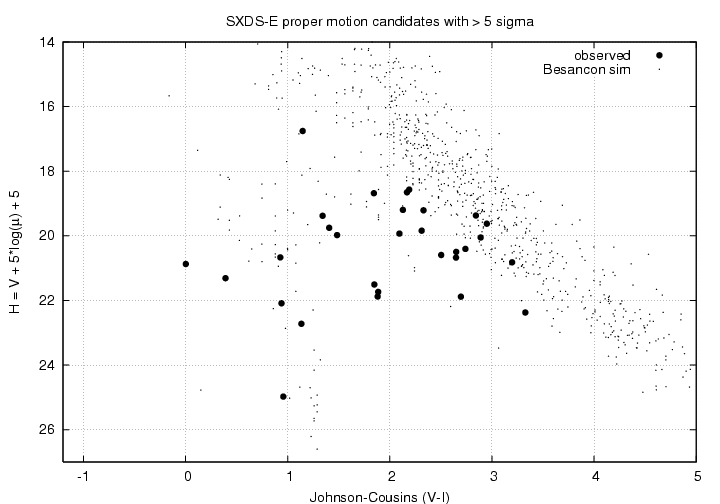
I have finished an analysis of the SXDS-E field, using images from 2002-2008 to look for stars with proper motions. This is just a short report on the results. I can provide more details upon request.
Following the procedures outlined in the paper by Richmond et al. on proper motions in the SDF, I detected stars in i-band and Rc-band images of the SXDS-E, matched them across epochs, measured proper motions, and selected those with very significant motions. After discarding objects with poor photometry and/or spurious motions, I was left with a sample of 30 objects. You can find a detailed list, with positions and proper motions and finding charts, on mahina at
/data4/michael/sxds_pm/sxds_e/html_page/sxds_pm_e.html
The motions are in the expected direction and of the expected size, as shown in this comparison with objects drawn from a simulation using the Besancon model:

The one outlier in this graph is due to blended pair of faint objects, and has been deleted from the following analysis.
We can use the Besancon model to predict the location of stars in a reduced proper motion diagram. This looks very much like the diagram for the SDF, which is not a surprise. Note that white dwarfs (WDs) appear at the left side of this diagram, with halo WDs at the bottom of the distribution on the left.

Below is the reduced proper motion diagram, with the location of the observed stars shown in large black dots, and the model stars as small dots. I count six good WD candidates, which agrees very well with a quantitative prediction from the Besancon model of 6.5 WD in this region.
